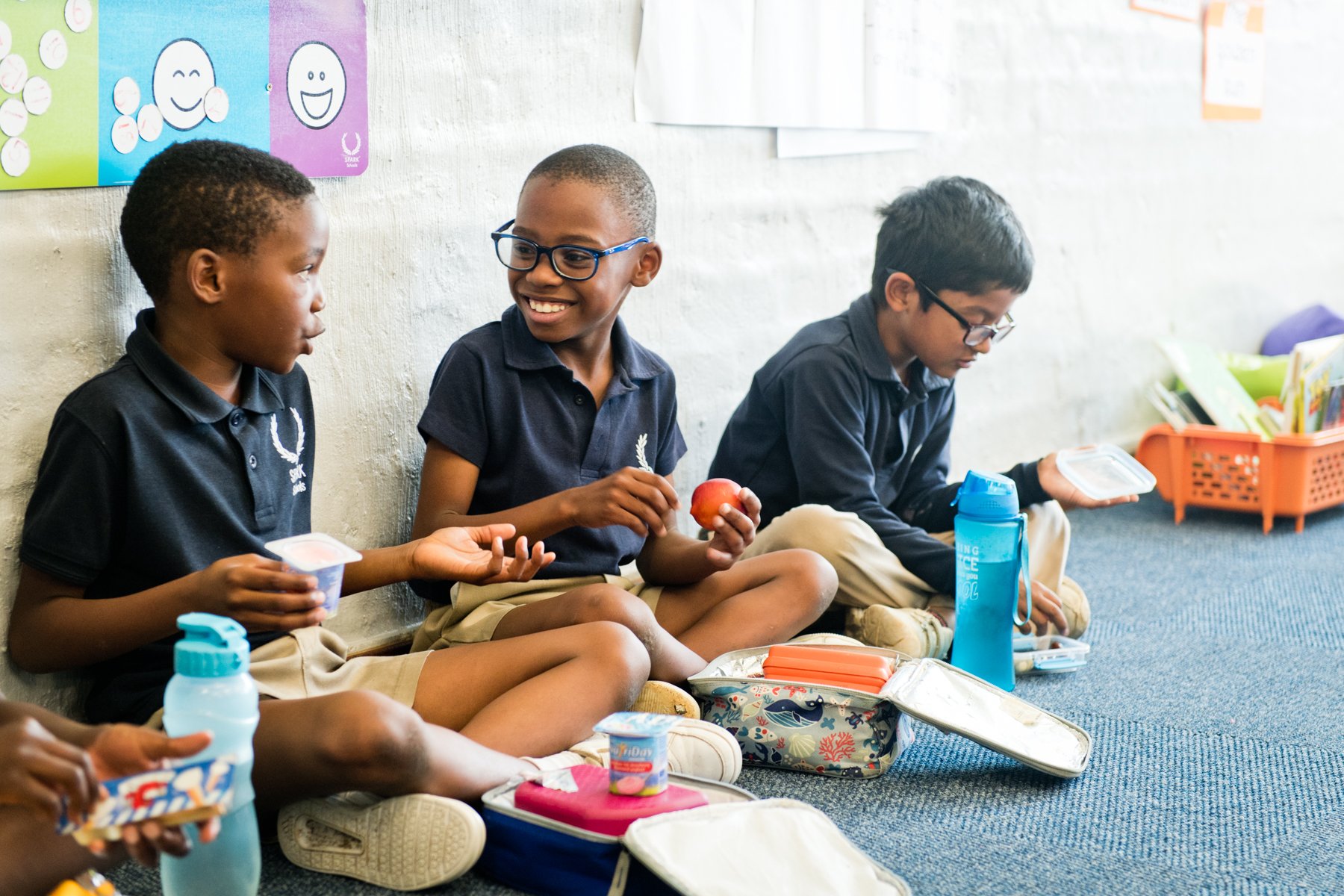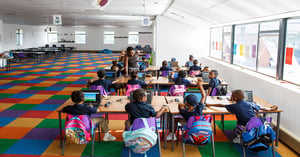That has spurred the holistic education concept, defined by UNESCO as an approach that seeks to “fully activate all aspects of the learner’s personality (intellect, emotions, imagination, body) for more effective and comprehensive learning”.
To understand what holistic education is and what impact it could have on student outcomes, I spoke with Oliver Dick, Blended Learning Lead, and Lindy du Preez, Regional Manager, at SPARK Schools in South Africa.
What role do parents play in holistic learning?
Oliver Dick: I would say it is developing the scholar as a well-rounded human being and taking social-emotional context into account. (Students are called scholars at SPARK Schools.) At SPARK Schools, we also include the parents and family members of our scholars in this growth. It is a lot of physical education, so students are also physically active. The aim is to round off the scholar to be the most globally competitive person out there. School in South Africa has always been a place to cultivate manners and moral learning. What they learn at school can be transferred to how they are at home, and this gets us the buy-in from parents. My daughter goes to a SPARK school and I can see her using some of the skills she has learned at school at home.
Lindy du Preez: I think our biggest focus is to acknowledge that experience and environment play a big role in learning and determine the course of life in general, especially here in South Africa. So, what we are trying to do is to socially and emotionally develop our scholars and that can’t be done without involving the parents. Educating parents on how they can help the scholars develop holistically. All of our subjects, even PE, include the social and emotional learning component. We want to prepare our scholars to become global citizens and cope wherever they are in the world.
Social-emotional learning is integrated into everything at SPARK Schools. It isn’t isolated as a separate subject we teach.
Oliver Dick, Blended Learning Lead, SPARK Schools
Engaged parents, better student outcomes
Oliver: We have high expectations of our parents. We expect parents to do 30 hours of parental involvement a year and that can be as simple as donating tissues, attending meetings and knowing what is happening at school. We are quite lucky that the parents are engaged and we have achieved very high parental involvement. Their presence is felt in the school. We know they are not available all the time, but they make the time. And, it is good for scholars to see their parents being involved.
We have regular parent community meetings, which took place in person before the pandemic and virtually since lockdown, and report card conferences – they come to collect the report cards and spend 15-30 minutes with the class teacher.
Lindy: There is direct correlation with how parents are involved and the scholars’ results. I think we at SPARK Schools want to create as much opportunity to connect with the parents as possible.
There is also very clear communication so parents know what the expectations are. It is always more beneficial for parents to meet teachers face-to-face instead of virtually. We also have frequent parent community meetings, and a topic might be social-emotional learning and challenges students face at home, such as with siblings.

Social-emotional learning is integrated into every aspect of learning, including lunch, at SPARK Schools.
Social-emotional learning
Oliver: Social-emotional learning is integrated into everything at SPARK Schools. It isn’t isolated as a separate subject we teach. We use a program called Toolbox. It has 12 modules to help teach scholars a variety of skills from resolving conflict to being a better listener. Parents are also informed what these tools are and how scholars can use them at home. And, from what we see, these tools help our scholars improve their emotional processing. We also gauge how scholars interact with one another, and if they are experiencing problems at school. At the same time, parents can raise any concern and provide feedback to our teachers.
Lindy: For 15 minutes a day, scholars (from kindergarten onwards) can discuss a specific topic identified by the teacher and share their thoughts. Have some empathy with classmates. This is worked into the timetable. It’s their safe space to speak and share thoughts. For me as a teacher, I have come to consider so much more and you see teaching from a holistic perspective – the impact of the discussion on the student not just at school but in their daily environment and their learning in general.
Equipping our teachers with tools to manage emotionally challenging situations makes scholars feel that they belong. Our scholars have a sense of confidence that we don’t see in other school environments where they don’t focus on social-emotional learning.
Lindy du Preez, Regional Manager, SPARK Schools
This is included in the learning plan, so teachers are aware of what they need to teach and the benefits to the scholar is seeing the teacher not just teaching you but caring for you as a human being. Equipping our teachers with tools to manage emotionally challenging situations makes scholars feel that they belong. Our scholars have a sense of confidence that we don’t see in other school environments where they don’t focus on social-emotional learning. They take on challenges without fear of failing. Behavior adaptation is done in a more caring way, rather than the action-consequence method of discipline. And this builds remarkable confidence.
How do you use itslearning to promote holistic learning?
Oliver: We have created courses in itslearning, including a repository of personal social well-being resources. We want to use the platform for students to record their impressions and feedback. With hybrid learning — a combination of face-to-face and digital learning — I can easily create links via announcements and reschedule them as needed, when needed.
How to build a comprehensive holistic program
- Make the thought process around the students evident.
- Ensure that your LMS supports your holistic learning program goals. Here are some ideas on how to choose the best LMS for your school.
- Build a dedicated program for each student using the individual learning plans.
- Integrate holistic learning into every subject, rather than having it isolated as a separate subject.
- Make the students feel welcome and want to be involved. Engage full participation with multimedia, so students can record their impressions in text, audio or video form.
- Give teachers a framework or course templates on how to design holistic learning — so they can focus on the primary role of teaching.
- Welcome student feedback and revise the program to make social emotional learning better and more effective.
